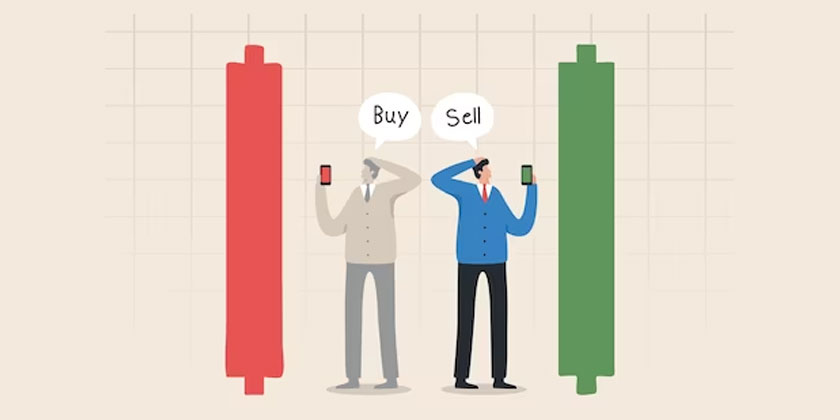Imagine you're playing chess, you've gained an advantage, your opponent is cornered, but you hesitate to make the final move. A small mistake, and the tables turn. In trading, "squaring off" is that decisive final move, the moment when you close your position, lock in profits, or limit your losses.
Whether you're a day trader in India, a forex trader in Africa, or an equity investor in the U.S., understanding how and when to square off can make the difference between consistent profits and painful reversals.
This guide clarifies the meaning of "square off" in trading, its significance, how it operates and how beginners can apply it effectively.
Square Off Meaning in Trading Explained

In trading, square off refers to closing an existing open position.
If you've bought first, you square off by selling.
If you've sold first (shorted), you square off by buying back.
It's a standard process in intraday and derivatives trading as traders open and close positions within the same session to realise profits or prevent overnight exposure.
Example:
You buy 100 shares of Tata Motors at ₹1,600 in the morning.
Later in the day, you sell those 100 shares at ₹1,620.
Congrats, you've "squared off" your position and made ₹20 per share in profit.
Why Is Squaring Off Important in Trading?
Squaring off isn't just a technical step; it's risk control and profit realisation rolled into one.
Markets don't guarantee direction, so holding open positions without a plan can backfire. By squaring off:
You lock in gains before reversals happen.
You limit potential losses in volatile markets.
You avoid overnight risk, margin interest, and regulatory penalties (especially in intraday trading).
You free up margin and capital for the next trading day.
Square-Off in Intraday Trading
1. Intraday Positions Must Be Closed the Same Day
In intraday trading, every position is intended to be settled before the market shuts.
If not, your broker automatically squares off your position near the end of the session.
Example:
You buy 500 shares of Reliance Industries at ₹2,700 in intraday mode.
If you don't sell them before 3:15 PM, your broker automatically sells them between 3:15 PM and 3:25 PM.
This ensures you don't carry forward intraday positions to the next session.
2. Automatic Square-Off Timing
| Market |
Square-Off Window |
Exchange Close |
| NSE/BSE (India) |
3:15 PM - 3:25 PM IST |
3:30 PM |
| U.S. Stocks (NYSE/NASDAQ) |
Typically 3:55 PM - 4:00 PM ET |
4:00 PM |
| Forex Market |
Continuous (auto square-off based on margin calls or session resets) |
24-hour, rolling close |
Square-Off in Different Market Segments

1. Equity (Cash) Segment
As mentioned above, square-off means selling the shares you bought the same day (intraday).
If you purchased 100 shares of TCS through intraday trading, you need to sell them before the market closes.
If you used delivery mode (CNC), you can hold them overnight.
2. Futures Market
Futures positions can be closed out at any moment before expiration.
If you've gone long on NIFTY Futures at 22,000, and it rises to 22,300, you can close (square off) the position and book your profit without waiting until expiry.
Brokers could automatically square off futures on the expiry day if the margin drops below the required level or before rollover.
3. Options Market
Options traders square off to book profits or limit losses.
For example, if you bought a call on Tesla at $8 and it rises to $15, you can square off (sell it back) before expiry. If you sold an option, squaring off refers to purchasing it again to finalise the trade.
Due to the increase in weekly expirations, options square-offs occur more often, occasionally multiple times within a week.
4. Forex Market
In forex, squaring off means closing your currency pair position.
If you're long EUR/USD at 1.1050 and sell at 1.1080, you've squared off and booked 30 pips profit.
As forex operates almost around the clock, square-off is regulated by trading sessions, margin calls, or by broker-specified end-of-day limits.
How Square-Off Orders Work (Step-by-Step)
Open a trade: Buy or sell any instrument.
Monitor price movement: Utilise stop-loss and target.
Initiate square off: Click "Exit" or "Square Off" on your platform.
The system executes in reverse order: It sells your position at the existing market rate.
P&L realised: Profit or loss becomes final; margin released.
Frequently Asked Questions
1. What Does "Square Off" Mean in Trading?
"Square off" refers to closing your current open position in the market.
If you purchased shares, you sell them to close the position.
If you shorted initially, you repurchase them to close the position.
2. What Happens if I Forget to Square Off My Position?
If you don't square off an intraday trade, your broker will automatically close it before the market closes. It is called auto square-off.
3. What Time Does the Auto Square-Off Happen?
4. What Is a Stop-Loss Square-Off?
It closes your position once the price hits your defined limit, preventing bigger losses.
5. What's the Best Time to Square Off a Trade?
Conclusion
In conclusion, squaring off isn't just about pressing a button; it's about discipline, timing, and understanding risk. Many traders focus on entry points, but experts understand that exits determine profitability.
Think of it like landing a plane. Takeoff (entry) is easy, but a safe landing (square-off) is what truly counts. Learn when and how to square off smartly, use your broker's tools, and trade with a plan, not on impulse.
Disclaimer: This material is for general information purposes only and is not intended as (and should not be considered to be) financial, investment or other advice on which reliance should be placed. No opinion given in the material constitutes a recommendation by EBC or the author that any particular investment, security, transaction or investment strategy is suitable for any specific person.























